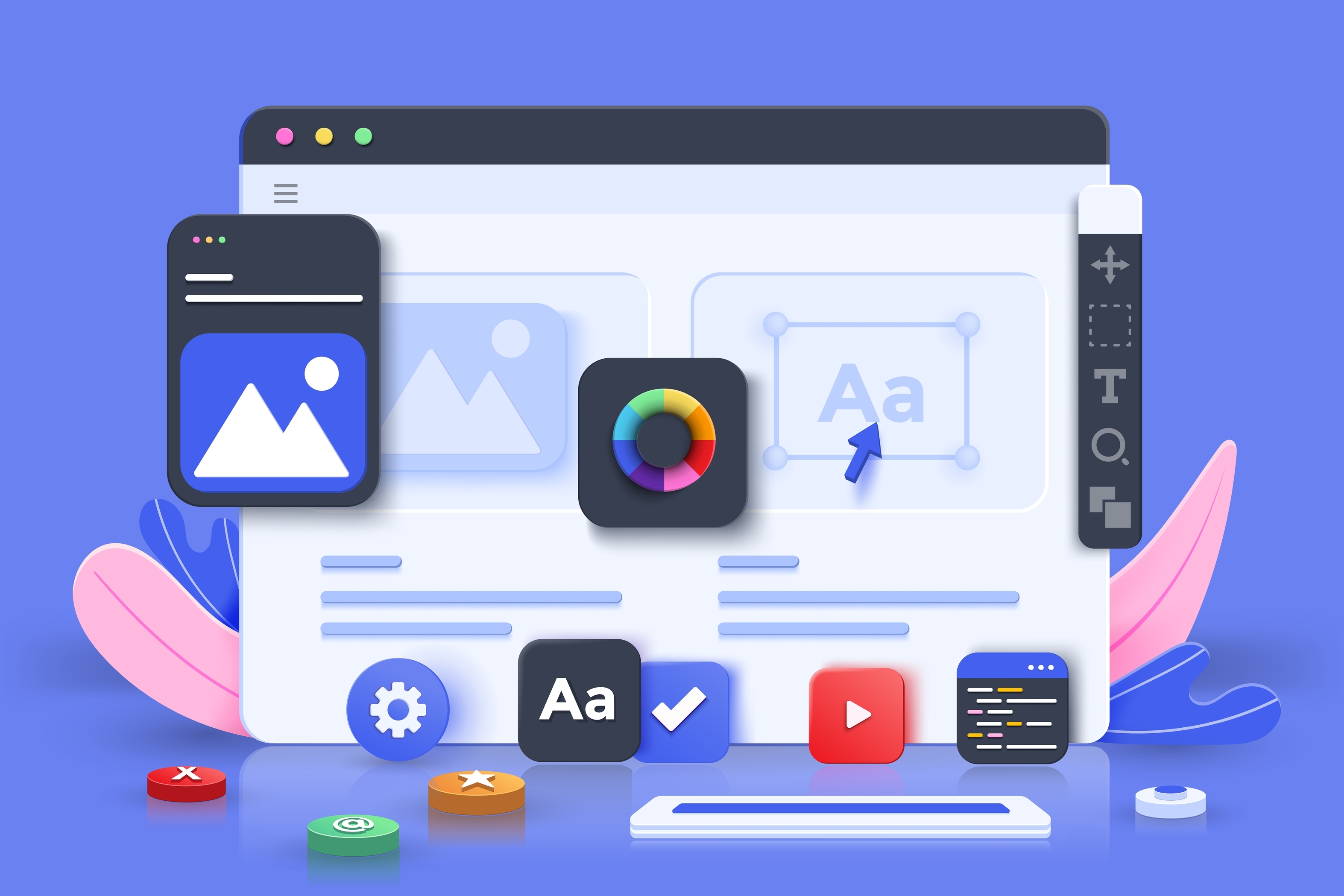
8 Web Design Mistakes to Steer Clear of for a Successful Redesign
8 Web Design Mistakes to Steer Clear of for a Successful Redesign
Did you know that 75% of your website's credibility depends on its design?
A poorly designed website can make your company appear untrustworthy.
Whether you're creating a new site or revamping your existing one, avoiding these common design mistakes is crucial for a positive online presence.
In this article, we provide expert insights on some of the most prevalent web design blunders. In addition, we bring you practical solutions to rectify or prevent these issues.
1. Neglecting Accessibility
Treating accessibility as an afterthought is the most significant mistake you can make in web design.
Four primary accessibility errors identified were:
Insufficient Colour Contrast
Failing to provide adequate contrast between background and foreground colours can make text and icons challenging to discern, particularly for those with visual impairments like colour blindness. Unfortunately, a staggering 80% of homepages tested were found to have colour contrast issues.
Missing or Inappropriate Alt Text
Individuals who use screen readers rely on alt text to understand images and graphics. If alt text is missing or is inadequate, this excludes readers who depend on it. As such, alt text is essential to ensure you clearly get your meaning across.
Inadequate or Missing Visual Focus Indicators
Lack of clear visual focus indicators can hinder keyboard navigation and affect the user experience. Visitors won’t have the ability to fully experience your website, which will lead to a poor user experience.
Overlooking Accessible Names or Labels
Information conveyed visually should also have accessible labels for those who use assistive technology. For example, if you have a ‘Read More’ button, make it more discernible to those using accessible labels, by replacing it with something some specific, such as ‘Read more about our marketing tips.’
2. Ignoring Responsive Design
In the second quarter of 2022, mobile devices accounted for over 58% of global website traffic. Neglecting to ensure your website is as user-friendly on mobile as it is on desktop can lead to frustration and high bounce rates. If your site is of a poor quality on a phone, laptop, tablet or even TV, visitors will likely loose trust and worse, exit from the site.
3. Prioritising Aesthetics over User Experience
Prioritising aesthetics over functionality is a common mistake. While excessive use of design and graphic elements may look impressive, if they don’t align with your website's purpose, users will feel disconnected from the real purpose of your site.
4. Lack of Customisation
Using cookie-cutter templates for your web design – and failing to customise them – is a huge web design mistake. Defaulting to a standard hero banner can be monotonous and uninspiring. Be sure to customise your website to make it eye-catching, vibrant, and interesting.
5. Using Ineffective Features
Including features that do not convert well is also a mistake. For example, relying on rotating carousels can be problematic, as users tend to avoid them, particularly on mobile. At the end of the day, your biggest priority is to deliver an effective website.
6. Lack of Hierarchy
A website without a clear hierarchy can confuse visitors. Establishing a visual hierarchy guides users' attention and simplifies navigation. This ensures you achieve your primary goal – creating a seamless user experience that generates positive results.
7. Unclear Navigation
Unclear navigation can frustrate visitors. Ensuring consistent and intuitive navigation across different touchpoints is essential for a smooth user experience.
8. Ineffective Communication of Business Purpose
Your website should clearly communicate your company's purpose. If visitors are unsure of your website's mission, they will soon leave. First impressions are vital, so get to the point in an interesting and effective way, by clearly communicating your business purpose and ensuring your users that yes, they’re in the right place!
How to fix these common web design mistakes
Prioritise accessibility
Incorporate accessibility into your design from the start and educate yourself on best practices. Ensure that personas are inclusive of various abilities.
Implement responsive design
Test your website on multiple devices and consider using mobile-friendly templates.
Balance aesthetics with user experience
Collaborate effectively with different teams and align design with user goals.
Customise your design
Be intentional about design choices, and don't be afraid to stand out in your industry.
Avoid ineffective features
Evaluate the performance of features and prioritise the most valuable content.
Establish hierarchy
Use heading tags, size differences, and composition to create a clear hierarchy.
Ensure intuitive navigation
Define levels of navigation, use clear labelling, and test navigation on various screen sizes.
Communicate your business purpose
Align your design and copy with your website's mission, ensuring clarity in conveying your company's purpose.
By avoiding these web design mistakes, you can enhance your site's credibility and provide visitors with an engaging and informative experience. Keep in mind that web design is an ongoing process that benefits from user research and testing.
Looking for superior web design solutions that get the right results? Reach out to the team at EWM today!